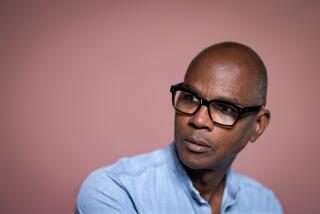Avigdor Arikha dies at 81; Israeli artist who as a boy sketched concentration camp scenes
Avigdor Arikha, the Israeli artist who learned the power of art as a boy during the Holocaust when he sketched scenes from a concentration camp onto salvaged scraps of paper, has died in Paris. He was 81.
Arikha died Thursday from complications of cancer at his home in Paris, where he spent most of his adult life, said Janis Gardner Cecil, sales director of the Marlborough Gallery in New York, which represented him.
Arikha, a painter, draftsman and printmaker, became one of Israel’s most important contemporary artists, imbuing his portraits and scenes of daily life — a red umbrella against a wall, an overflowing bookshelf, a jumble of bottles in a cabinet — with enigmatic, disconcerting beauty.
“He had an exceptional gift for capturing something deep in people and expressing their mystery,” French Culture Minister Frederic Mitterrand said.
The artist, who abandoned abstract art for figurative work in the 1960s, was well-known for portraits of subjects including Queen Elizabeth, the Queen Mother and his close friend, writer Samuel Beckett. He also produced many probing portraits of himself and his wife, poet Anne Atik.
“I paint not to get a copy of nature but to get with the brush what I see while I see it,” he told The Times in 1987. “It’s an act of observation by means of the brush. The instant cannot be repeated and the brushwork is organic. When you retouch it, you disorganize it. I can’t bear to go back.”
Born in Romania on April 28, 1929, Arikha turned to drawing to cope when he was sent to a Ukrainian labor camp at age 12. Seventeen sketches survived the war: One showed a pile of corpses in a wagon and a woman’s naked body being tossed into a grave.
Arikha and his sister were rescued when his drawings came to the attention of the International Red Cross during a camp inspection. Arikha’s father died in the Holocaust, and his mother learned that her children were alive in Palestine only after the war.
Arikha lived on a kibbutz, studied at the Bezalel School and fought in the war over Israel’s creation, during which he was wounded in 1948. Recognizing his talent, supporters in Israel insisted he go to Paris to study and financed him.
He arrived in Paris in 1949 and built on the foundations of his Israeli studies at the Ecole des Beaux-Arts.
Arikha’s works are in collections around the world, including the National Portrait Gallery in London, the Los Angeles County Museum of Art and the Metropolitan Museum of Art in New York. He also wrote extensively about art and was named a knight in France’s Legion of Honor in 2005.
In addition to his wife, Arikha is survived by daughters Alba Smail and Noga Simonetta, and two grandchildren.
More to Read
Start your day right
Sign up for Essential California for the L.A. Times biggest news, features and recommendations in your inbox six days a week.
You may occasionally receive promotional content from the Los Angeles Times.






